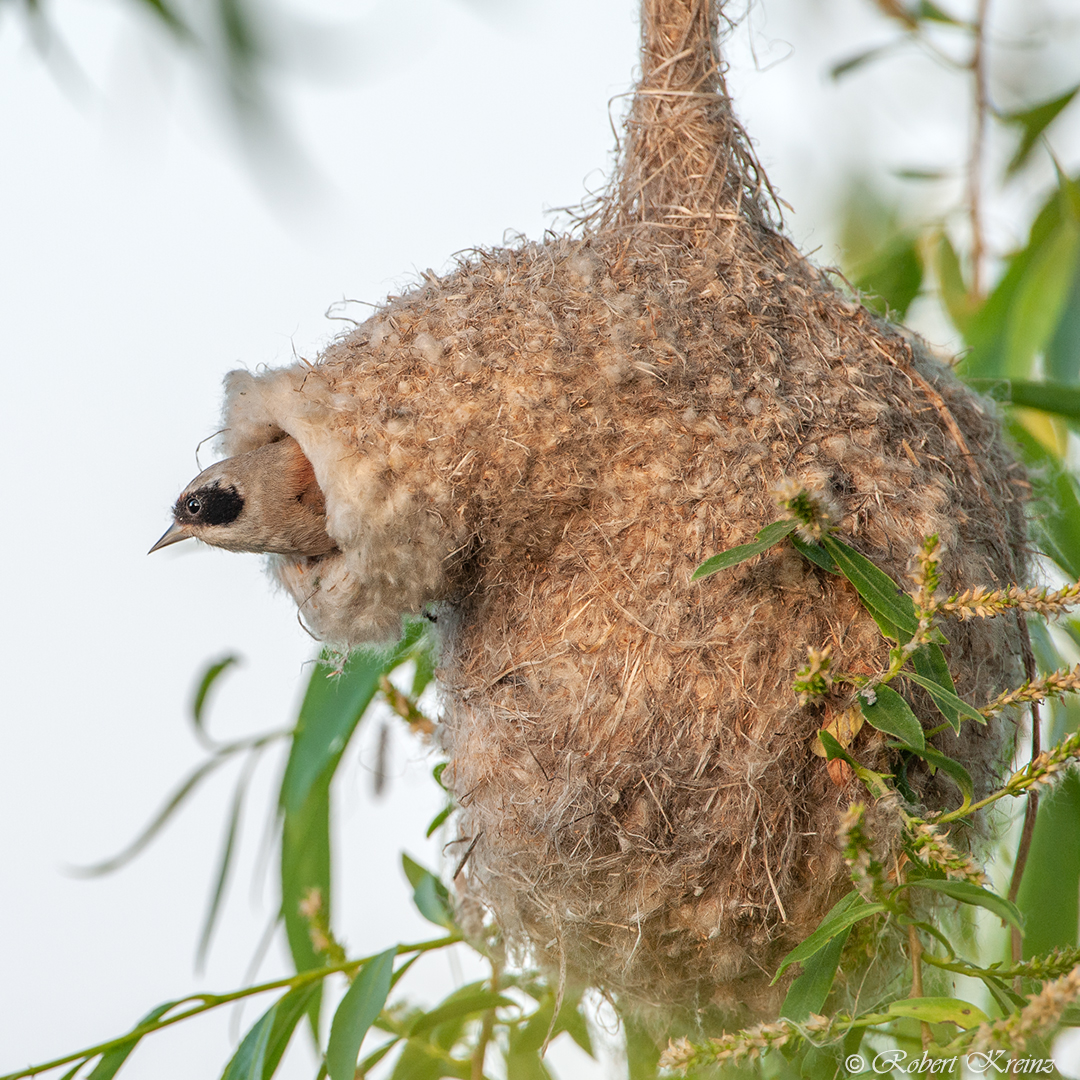The Eurasian Penduline Tit (Remiz pendulinus) may be no bigger than a sparrow, yet it is one of nature’s most ingenious engineers. Along riverbanks and lakeshores across Europe and Asia, this tiny songbird weaves elaborate, pouch-shaped nests from plant fibers, seed fluff, and spider silk. The result is a soft, hanging structure that sways gently in the breeze — a home both beautiful and deceptive.
Its most remarkable invention? The “false entrance.” While most birds focus on making a secure doorway, the penduline tit makes two. One is the real passage leading to its hidden egg chamber. The other is a perfect imitation — a tunnel that leads to an empty, dead-end chamber. To a hungry snake, climbing rodent, or nest-raiding bird, it looks like the real deal. They enter, find nothing, and often abandon the nest entirely, unaware that the true treasure lies in a separate, concealed compartment.
This tactic buys the bird precious time. A predator fooled by the false door wastes energy and exposes itself to danger, while the penduline tit’s offspring rest safely beyond reach. It’s not just architecture — it’s psychological warfare in miniature.
Watching one at work is mesmerizing: the bird clings to the hanging nest, stitching fibers with its tiny beak, reinforcing the walls, then carefully shaping the decoy chamber so it’s just convincing enough to lure an intruder. By the time the structure is complete, it’s both a nursery and a riddle — one that many predators fail to solve.
Deceptive. Delicate. Brilliant by design.
